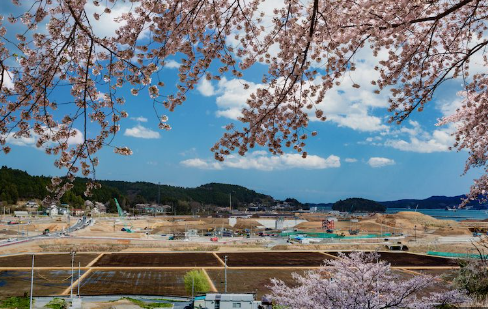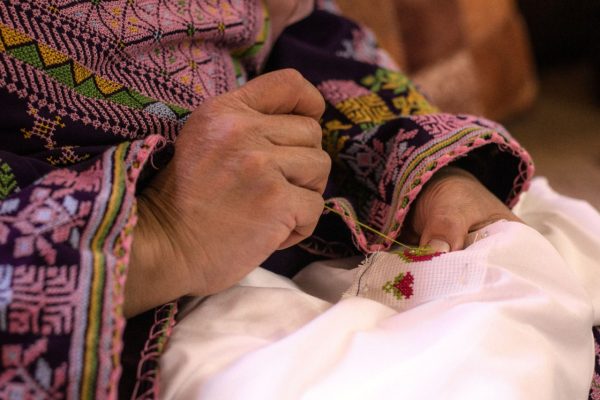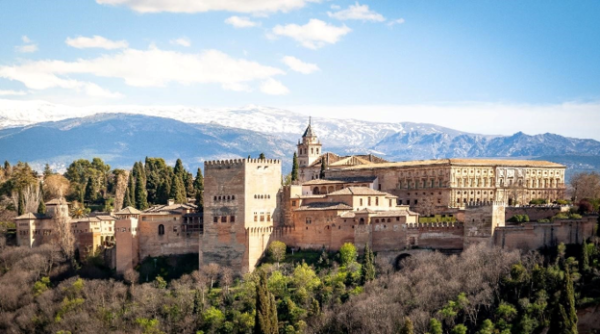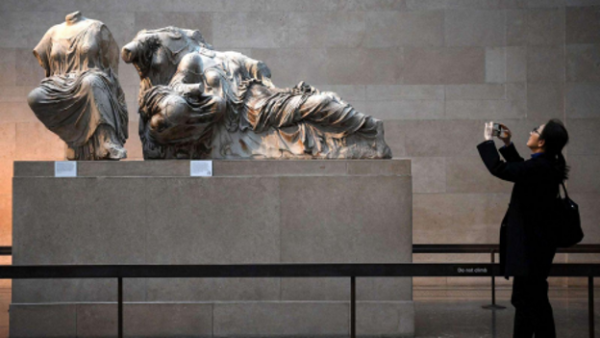3/11: A Hopeful and Relevant Aftermath of the Tohoku Earthquake

When you think of March 11, 2011, what comes to mind?
This date, or the numbers 3/11, might not ring a bell for you, but to Japanese citizens, it is a painful and sorrowful reminder of the Great East Japan Earthquake, also known as the Tohoku earthquake – the largest natural disaster the nation has seen in the 21st century.
But the damage that this life-changing earthquake caused does not even begin to compare to the Kahramanmaras earthquakes which occurred on the border between Türkiye (formerly called Turkey) and Syria on February 6, 2023. At the time of writing (March 1), the aftershocks of these two gigantic earthquakes, measuring 7.8 and 7.5 on the Richter Scale, are still taking place, endangering millions of people day by day. The death toll collectively reached 50,000 today. Humanitarian organizations and governments are working relentlessly to rescue those trapped under the collapsed building and to provide food and shelter to those in need.
Although earthquake-proof construction regulations were put in place in Türkiye in 2018 to prevent the collapse of buildings, the severely destroyed buildings of last month’s earthquakes told another story. Over 120,000 buildings collapsed, displacing about 5.4 million people, according to the United Nations High Commissioner for Refugees (UNHCR). Added to this was the extreme cold of February, with outside temperatures dropping to -9 degrees Celsius (15 degrees Fahrenheit), making living conditions even harsher for displaced people.
Nations globally have provided the affected countries with donations, and rescue and response teams, and international citizens have rushed to donate to charities helping affected citizens. What is interesting is that, according to the Turkish minister of Foreign Affairs, Minister Mevlüt Çavuşoğlu, Japan has donated the most out of any country to their respective Turkish embassies so far. Although Japan and Türkiye do not appear to have a special bond and the Japanese are not particularly known for their donation culture, this result is not just a coincidence. Although the urgent and desperate need and situation in Türkiye and Syria play a role in this, I believe that this is primarily because Japanese citizens experienced a similarly harrowing experience not too long ago and share the pain so closely with Turkish and Syrian citizens.
Whilst the current situation in Türkiye and Syria is devastating, the tale of the Tohoku earthquake of March 11, 2011, and of the efforts to recover from such natural disasters, poses an optimistic, hopeful outlook on the future which could stem from tragedies like this one.
The Story and Relevance of 3/11:
Japan is located in one of the most crowded parts of the world regarding tectonic plates. Four large tectonic plates clash on Japanese territory. Earthquakes happen regularly here, and the TV rings at least once a month, notifying us of earthquakes that have hit some regions of Japan. I remember that last year in March, a medium earthquake was happening every week, and the media intensely feared another large earthquake would occur sometime soon. Japanese citizens would not be surprised if an earthquake struck anytime, anywhere, whether that be on the train, when we are asleep, or when we are eating in a restaurant. Well, at least now we won’t be.
On March 11, 2011, the most devastating earthquake in Japanese history hit the sea near Miyagi prefecture, causing a 9.0 magnitude earthquake. It was the 4th largest earthquake recorded in the world since 1900. However, this was not the end of the tragedy. These earthquakes triggered massive tsunamis which destroyed the coasts of the Fukushima, Iwate, and Miyagi prefectures. The height of these tsunamis was 9.3 meters (30 feet), the size of five and a half average humans. Combined, this series of earthquakes and tsunamis resulted in the deaths of 15000 people, with an additional 7500 lost, 5400 injured, and 125 000 displaced.
I was only five years old when the earthquake struck and I lived relatively far away from Tohoku, yet I remember wondering why I was going home early from kindergarten and why everyone around me was panicking. My mother tells me every year that she cannot forget the horror of seeing tsunamis on screen and all the residents and buildings being swallowed by them. This incident traumatized the nation and left it mourning the loss of culture, cities, and loved ones.
Soon afterwards (as with the Kahramanmaras earthquakes), experts identified the safety and construction flaws that had led to such severe damage and legislation regarding the construction of infrastructure was made far stricter than before. Safety measures such as hazard maps detailing the danger zones for earthquakes and tsunamis were distributed to schools and households, and evacuation points – public places that are relatively safe from these disasters – were designated for citizens in that area to evacuate to. Every year, all schools also conduct an evacuation drill to prepare the faculty and students for the possibility of another earthquake or tsunami.
It has been almost 13 years since the earthquake, but the date never goes unmarked. Every year on March 11 at 2:46 pm JST, the time the first earthquake occurred, every citizen (whether at work or school) takes one minute of silence to honor the lives that were lost in these earthquakes and tsunamis. Major television stations such as Japan’s national television, NHK, do hours-long documentaries on these earthquakes every year leading up to and on March 11, showing the determination of the nation to never forget this disaster. These documentaries include interviews with the victims, progress since then, new research regarding earthquake detection or the likelihood of another major earthquake occurring in the future, and keeping citizens informed and alert on possible earthquakes.
Japanese citizens of international influence consistently remind their nation and their international audience of the earthquakes on March 11. One of the most notable cases is Yuzuru Hanyu, the two-time Olympic gold figure skater who was hit by the earthquake when he was 17 years old in Sendai, Miyagi prefecture – the prefecture that was the most heavily impacted by the earthquake. Every major documentary featuring him will never fail to mention his past and struggles after his school, home and beloved skating rink were all destroyed by the Tohoku earthquakes. He plans to perform an ice-figure skating show in his hometown, Sendai, on March 11 this year to raise funds and remind people of the earthquake.
Interestingly, many recent, popular anime protagonists are from the city of Sendai (a fact that I recently discovered), where the earthquake hit the hardest, helping to raise the city’s popularity and relevance to international audiences. Nationally, many student and non-profit organizations still fundraise for the victims of the Tohoku earthquakes. For example, in my old school, during the annual school festival last year, we set up a booth for goods from Tohoku and donated all of the proceeds to charities working to assist and revive the destroyed cities.
How We Can Help:
As international citizens, although our actions might not directly affect the dire situation, they can significantly help in funding initiatives that help the affected citizens of Türkiye and Syria. Instead of sending goods and necessities which might take days or weeks to get into victims’ hands, the Turkish government is seeking funds and donations to help citizens as quickly and efficiently as possible. We can spread awareness through social media or lead a fundraising project towards this cause.
The most important thing we can do, in the long term, is never to forget. Just like Americans and the world remember 9/11, or the Japanese remember 3/11, we must never forget February 6, 2023. We must ensure that our nations and our families are prepared for natural disasters because they can happen anytime, anywhere, and without warning, and are capable of causing devastation for millions. But most of all, we must now support Türkiye and Syria in rebuilding their cities and recovering from this disaster in any way we can to achieve a hopeful future for the affected people.
Here are the charities seeking donations towards the Kahramanmaras earthquake:
- Turkish Embassies in your country: https://www.mfa.gov.tr/turkish-representations.en.mfa
- Syrian Embassies in your country: https://embassies.info/syria
- Save the Children: https://www.savethechildren.org/us/what-we-do/emergency-response/turkey-syria-earthquake
- The Red Cross: https://donate.redcross.org.uk/appeal/turkey-syria-earthquake-appeal
Recommended Reading and Sources:
- Turkish Embassy Donations: https://news.yahoo.co.jp/articles/f901723038646e08ec2d3fb3310ec2d66a055848
- Tohoku Earthquakes: 特集 東日本大震災 : 防災情報のページ – 内閣府
- Construction Failures in Turkey: https://www.bbc.com/news/64568826
- Displaced People: https://www.theguardian.com/world/2023/feb/12/what-shall-we-do-millions-displaced-in-turkey-and-syria-after-earthquake
- Rescue: https://time.com/6255634/earthquake-turkey-syria-erdogan-rescue/
















